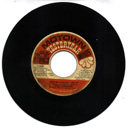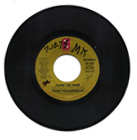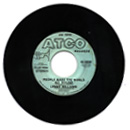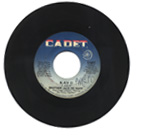| DON'T FORGET
THE MOTOR CITY...
An emo journal by Brad Sonder
Took a Wednesday
off from work and went
to Detroit on Tuesday afternoon. Saw the Charalambides and Windy
& Carl play at Stormy Records, a store in the city of Dearborn
that Windy & Carl own. Even though record stores usually aren't
the greatest venues for bands -- performance energy doesn't conduct
very well in a room designed for browsing, and it's often like
watching a band play in a hallway -- the Charalambides played
a haunted quiet dreamy set that made these sorts of things irrelevant.
I can still hear Heather Murray's unaccompanied pedal steel solo, in which she
kept doing these dives/lifts, each one of which rearranged my
imagination. Windy & Carl played one long instrumental piece
that actually reminded me (no drugs) of lush vegetation and/or
a painting that looks deceptively simple but reveals more detail
if you stare at it. Both bands did music that could non-ironically
be described as beautiful. Noodling it was not.
After the show we needed to come down to earth a bit; it was
time for some food and lodging. We got a room at the Mercury Motel, only a few
blocks down the street from Stormy. Windy herself told us that
it seemed to be a reputable joint, but had never stayed there.
Reputable, sure, fairly, as well as being kind of run-down and
overpriced at something like 57 bucks for what amounts
to about a 35 dollar room. Our first room was more like a 30 dollar value --
our feet actually hung off the end of the bed and the TV didn't work -- so we got a
different one. It was better, more like 40 bucks, so it evened out to 35.
In the morning we drove into Detroit proper to see the Heidelberg Project,
where artist Tyree Guiton has taken a run-down block and covered
all the houses and empty lots with his distinctive brand of crazy-quilt
montage/assemblage painting and sculpture. Apparently the city
or neighborhood decided to tear down most of the houses that he
had painted, so now he's covering the empty lots with art instead.
I can see why houses were torn down, because it is a run-down
neighborhood, but no new houses have been put up, so what's the
point? Apparently the only person interested in actually revitalizing
the neighborhood is Guiton, besides some guys around the corner
who were putting a new roof on a house, even though it seemed to be barely standing itself.
From Heidelberg we decided
to drive downtown and just look around a little bit. On my previous
visit to Detroit, almost seven years ago in 1995, the downtown
had struck me as completely abandoned, and I spun dystopic descriptions
to whoever would listen. (Mostly Mrs. Sonder.) These tales included
each of the following mythical images: 1. an abandoned skyscraper
(complete with boarded up and broken windows) 2. a steady presence
of homeless people (walking the street in a daze exactly like
the zombies in Night of the Living Dead) 3. small geysers
of steam pumping out of every grating in every street (as if the
diseased city was literally choking out smoke) and 4. (as if sent
by a humorous God mocking the city's 'ghost town' status) an actual
fucking tumbleweed blowing through the sparse city traffic.
This time it wasn't
really like that at all. Either my initial visit was on a Saturday
or a Sunday, when the downtowns of most cities are relatively
quiet, or Detroit has undergone some revitalization in the last
seven years. Perhaps both. Either way, this visit was on a Wednesday,
and there were quite a few people walking around downtown who
obviously had some legitimate work-week business going on. The
geysers of steam were still plentiful, but no tumbleweeds, and
none of the skyscrapers seemed to be abandoned. I was quite disappointed
because I had always remembered Detroit as one of the most impressive
real-life science fiction landscapes I'd ever seen. Now it just
looked like another slower-paced second-tier Rust Belt metropolis.
A quick look through
the Cass Corridor neighborhood yielded much the same results.
Back in 1995, my band played a show in said neighborhood, very
close to the Wayne State University campus, at a now-defunct coffee
house called Zoot's. It was a coffee house in a bad neighborhood,
and it felt more like a bunker, a place to hide out from the night
of the living dead. Still, feeling cooped-up and adventurous about
twenty minutes before dark (and at least an hour before our turn
to play), Chris Heine and I walked to a corner grocery store two
blocks away. It was packed with gangsters and bums shouting at
each other, and we were aggressively panhandled every step of
the way to and from. I still remember the exact words and delivery
of a line I got from one business-minded Yaphet Kotto-lookin'
mug: "Give me a dollar so I can buy something to drink like
y'all have." I knew we were almost literally next
door to the Wayne State University campus, but if the neighborhood
was a student ghetto, I sure wasn't seeing too many students (although
it did seem like Heine and I were about to learn a
lesson). Perhaps the Cass Corridor was more of a student ghetto
in 1965, when it was the home of the TransLove Energies movement,
a rock 'n' roll/poetry movement centered around Wayne State students
like John Sinclair, whom you can read much more about in Cary
Loren's half of this issue.
Now, the Cass Corridor
is neither a student ghetto or even a just plain ghetto; it's a student
shopping mall. It looks like any mildly cheesy college-town city
center, complete with Kinko's and Subway. Stand at Woodward &
Warren and you just know that within 2 minutes you could buy a baggy
sweatshirt with a college logo on it for 59 bucks. On my last
visit such a thought would've been, well, unthinkable. Ah, but
even with college sweatshirts and lo-cal fast-food on display,
Detroit is still a run-down, mean, dirty city. Wayne State and
the Downtown are two islands in a vast shanty-town morass. Mrs.
S commented more than once that the neighborhoods, such as those
in and around the Heidelberg Project, resembled those of a poor
southern town...not even a city, but a small town. (Although the
Cass Corridor has some short bursts of nice, early 20th century big-city
row houses.)
And now
for the "music angle": as we were going south on Gratiot,
in between the Heidelberg and Downtown portions of our trip, we
saw a sign for something called "The Eastern Market."
We thought this might be some sort of open-air Turkish street
market, like the one me and Margie visited in Berlin, Germany,
and we wanted to get some of that food. Ah, but the "Eastern"
only referred to East Detroit, and it turned out to be just a
big parking lot/pavilion kind of area, surrounded by a cluster
of antique shops, and eateries that were surprisingly close to
brewpub. Marge has been keeping her eye out for good used furniture,
so we parked and got out at one of the bigger antique stores.
Didn't catch the store's name, but they had a very large stone
fountain out front, which passers-by kept asking about. "Does
the fountain work?" "It's got a big crack in it, but
it works," came the answer from the guy in charge, several
times. He was a calm guy with a mesh desert-style sun-drape hanging
down from underneath his baseball cap. Didn't catch his name either.
He had a beautiful mint condition Califone-brand record player
sitting out front on a table, the kind that have a built in speaker
and fold out of their own built-in carrying case. All you have
to do is take it anywhere and plug it in. I asked the guy with
the drape if it was for sale, and he smiled and calmly said, "Hell
naw."
It was windy outside and
the sun was warm. The classic windswept midwestern parking lot.
Just another frontier outpost, far from the great coasts. Could've been
Omaha or Kansas City. A lady, who had been standing outside
when we got there, was talking to the guy in charge about a friend
of hers who was going to meet her there. This friend, who was
an actress in the TV show Roc, had been introduced to her
by Martin Luther King's daughter. The chronology seemed plausible,
and I found myself thinking, "Well! Six degrees of separation
indeed!" I mentioned this to Marge later. She responded that
she had also heard the woman talking about her interesting friends,
and had assumed she was delusional. Marge is always right; of course the lady was delusional. And
I fell for it!
After the lady was done talking
for a bit, the guy with the drape turned to me and drawled, "I
did just buy a whole bunch o' records. 45's, if you want t' see
'em. Zalot o' good ones in there." I said I definitely wanted
to see them, and he ambled over to his truck and unlocked the
door. On the passenger side were a couple of boxes filled with
plastic bags that were filled with stacks and stacks of old 7-inch
singles, one right on top of the next, with no sleeves or paper
covers in sight. "They was in a closet in a houssat burned
down, but th' dude pulled 'em out an' cleaned 'em up and they
still alright. I mean, lookadis," he said, pulling a couple
out, "Izzgot some marks on it, from the smoke, buh-thass
clean, mm play good."
With that, he walked over to the
Califone and put one of the records on the turntable. Three or
four people came walking up. One man was big, in his fifties or
sixties, wearing a nice suit. The sound of very scratchy vinyl
came into the air, turned up loud through the small Califone speaker,
followed by a beautiful wash of horns, strings, and a funky guitar
groove. Just as the music surged, an angelic falsetto voice sang
out "Keep on truckin' babe...." and the big man
in the suit said, triumphantly and in a deep voice, "Eddie
Kendricks!" Hell yeah, I thought. The song was beautiful,
and looking through more records, I realized I had my hands on
a treasure trove, with records by James Brown, B.B. King, Marvin
Gaye, and Parliament mixed in with lots of promising obscurities.
There were lots of smoke rings, or dust rings, or something rings
on them, but the guy in charge said, more than once, that he was
gonna give 'em all a good cleaning before they were all for sale.
He had talked to a
dealer about him stopping by to take a look and maybe buy the whole
stash. I asked him how much he hoped to get, and he said, "Well
I know what I got here, so he can't gimme nothin'!" By this
time he had followed up the Eddie Kendricks single with a scratchy
version of "People Make the World Go Round" by the Stylistics,
a song from 1977 that I knew from a pristine CD version on the
soundtrack to the Spike Lee movie Crooklyn. This sounded
different, and it wasn't just because of the scratchy vinyl and
analog soul. "The Stylistics?" I asked the guy, demonstrating
at least some street cred. "Naw, zuh remake!" he answered.
Meanwhile, the man in
the suit was also checking out some of the titles. "A lot
of interesting stuff in there, I bet..." "Just reading
the titles is interesting," I said. Right then, he unearthed
a B.B. King record. "B.B. King," then he read the song
title: " 'Mashing the Popeye'. Okay! That's interesting,
all right!" "Mashing the Popeye???" I said. "Not
one of his bigger hits." After this exchange, I sidled up
to the man in charge. "How much for that Eddie Kendricks?"
"Two dollars," he said. "Two dollars a record."
I surprised myself with my rejoinder, because I've never been
much of a haggler. "How about two for three dollars?"
He accepted without hesitation. I had already found a good ten
or even twenty obscure soul records that looked well worth taking
a chance on, but I'm no professional DJ or hip-hop producer. I
was gonna narrow it down to just a couple good ones. The Eddie
Kendricks was a must . . . I already had it in my hand. Pretty
soon, while the man in charge talked to other customers, I was
over there manning the Califone myself, playing stuff like instrumental
James Brown b-sides, and "Close The Door" by Teddy Pendergrass,
which I vaguely remembered from its brief stint as a Top 40 pop
hit when I was young. I ended up getting four singles for six
dollars, an altogether pleasant consumer experience. They were:
Eddie Kendricks "Keep on Truckin (part one)" b/w "Son
of Sagittarius" (Motown Yesteryear Series, 1973)
 A-side,
as alluded to above, is fucking beautiful and should be one of
the all-time classic soul tracks. It already is among tons of
people, but it has yet to be revived by nostalgia radio. In a
way I hope it isn't. On Side B, submerged under the stormy crackle,
is an only slightly more rote tune that sounds like blaxploitation
soundtrack stuff. (Title has that aura as well.) A-side,
as alluded to above, is fucking beautiful and should be one of
the all-time classic soul tracks. It already is among tons of
people, but it has yet to be revived by nostalgia radio. In a
way I hope it isn't. On Side B, submerged under the stormy crackle,
is an only slightly more rote tune that sounds like blaxploitation
soundtrack stuff. (Title has that aura as well.)
Teddy Pendergrass
"Close The Door" b/w "Get Up, Get Down, Get Funky,
Get Loose" (Philadelphia International, 1978)
 I
actual remember this song from when it was a minor FM radio hit.
It was 1978, and I was seven or eight years old. I also remember,
not too long after that, Teddy Pendergrass having an accident
that left him paralyzed. Then, in the 80s, there was Eddie Murphy's
routine about how just a few notes sung by Teddy would have the
women in the audience tear off their panties and throw them onstage
in a hysterical frenzy. After all, according to allmusic.com,
"[Pendergrass's] 'For Women Only' concerts make Luther Vandross
shows seem tame in comparison." I
actual remember this song from when it was a minor FM radio hit.
It was 1978, and I was seven or eight years old. I also remember,
not too long after that, Teddy Pendergrass having an accident
that left him paralyzed. Then, in the 80s, there was Eddie Murphy's
routine about how just a few notes sung by Teddy would have the
women in the audience tear off their panties and throw them onstage
in a hysterical frenzy. After all, according to allmusic.com,
"[Pendergrass's] 'For Women Only' concerts make Luther Vandross
shows seem tame in comparison."
Then, in the 90s, I
bought the self-titled 1973 album by Harold Melvin and the Blue
Notes from a used dollar bin. I had never made the connection
that it was Teddy Pendergrass, here just the young frontman for
Melvin's group, who originally sang "If You Don't Know Me
By Now," the song made famous in the 80s by British pop darlings
Simply Red. But, spinning the album, I made the connection quite
heartily: the man can sing.
"Close The Door,"
being from a few years later, seems to bear the influence of Larry
Carlton and the Brecker Brothers, a harbinger of "quiet storm"
and "smooth jazz" radio formats. Still, Teddy Pendergrass
is a lot like the George Jones of R&B; he has a deep, totemic
voice that stamps any and all maudlin backing tracks down. Flip
side is a more upbeat number, slightly reminiscent of the Jacksons'
single from the same year, "Shake Your Body (Down to the
Ground)," but not possessing all of that song's top-notch
cartoonish joie de vivre.
Lenny Williams
"People Make the World Go Round (Mono)" b/w "People
Make the World Go Round (Stereo)" (Atco, 1972)
 The
aforementioned cover version. Pretty effin tight -- a less MOR,
more street version of the Stylistics hit, with a more struttin'
bass line and lots of wah-wah gtr-application. (Dig the synth
solo too.) Same song on both sides, one a mono version and one
a stereo version. I can't really tell the diff between the two.
I'm not really a big audiophile. How could you be with all the
crackle on these weather-beaten sides? The stereo side skips a
lot more, that's for sure. Anyway, who is Lenny Williams? Hailing
from Little Rock, Arkansas, he was signed by Atlantic and recorded
his version of this in-demand Thom Bell/Linda Creed composition
(the young Michael Jackson also did a version). Unfortunately
for Williams, the Stylistics got their version out first, and
it became a hit, stealing all of Williams' thunder. It didn't
set him back, though; he joined Oakland's mighty Tower of Power
and sang on some of their most classic material, such as "What
is Hip?" And his version of "People" kinda rules,
so he should have no regrets. The
aforementioned cover version. Pretty effin tight -- a less MOR,
more street version of the Stylistics hit, with a more struttin'
bass line and lots of wah-wah gtr-application. (Dig the synth
solo too.) Same song on both sides, one a mono version and one
a stereo version. I can't really tell the diff between the two.
I'm not really a big audiophile. How could you be with all the
crackle on these weather-beaten sides? The stereo side skips a
lot more, that's for sure. Anyway, who is Lenny Williams? Hailing
from Little Rock, Arkansas, he was signed by Atlantic and recorded
his version of this in-demand Thom Bell/Linda Creed composition
(the young Michael Jackson also did a version). Unfortunately
for Williams, the Stylistics got their version out first, and
it became a hit, stealing all of Williams' thunder. It didn't
set him back, though; he joined Oakland's mighty Tower of Power
and sang on some of their most classic material, such as "What
is Hip?" And his version of "People" kinda rules,
so he should have no regrets.
Brother
Jack McDuff "Black Is!" b/w "Win, Lose or Draw"
(Cadet, 1968)
 A funky
struttin' instrumental single by the legendary organ maven. Makes
me think of a time when it was actually worthwhile for groups
to record a quick number like this and get it on radio in Detroit,
Chicago, Memphis, St. Louis, etc., and make money doing it, because
the instrumental caught people's ear on the radio in between the
vocal sides, and they said things to each other like, "Who's
this, Brother Jack McDuff??," and then they went out and
bought the 45 to play at parties. Does anything like this happen
today? Is this how DJ Shadow's career works? Dunno. Side two,
appropriately enough, is a serviceable party number but a little
less distinguished. A funky
struttin' instrumental single by the legendary organ maven. Makes
me think of a time when it was actually worthwhile for groups
to record a quick number like this and get it on radio in Detroit,
Chicago, Memphis, St. Louis, etc., and make money doing it, because
the instrumental caught people's ear on the radio in between the
vocal sides, and they said things to each other like, "Who's
this, Brother Jack McDuff??," and then they went out and
bought the 45 to play at parties. Does anything like this happen
today? Is this how DJ Shadow's career works? Dunno. Side two,
appropriately enough, is a serviceable party number but a little
less distinguished.
BLASTITUDE
#13

next
page:
Confessions of a Social Alcoholic
|
|

